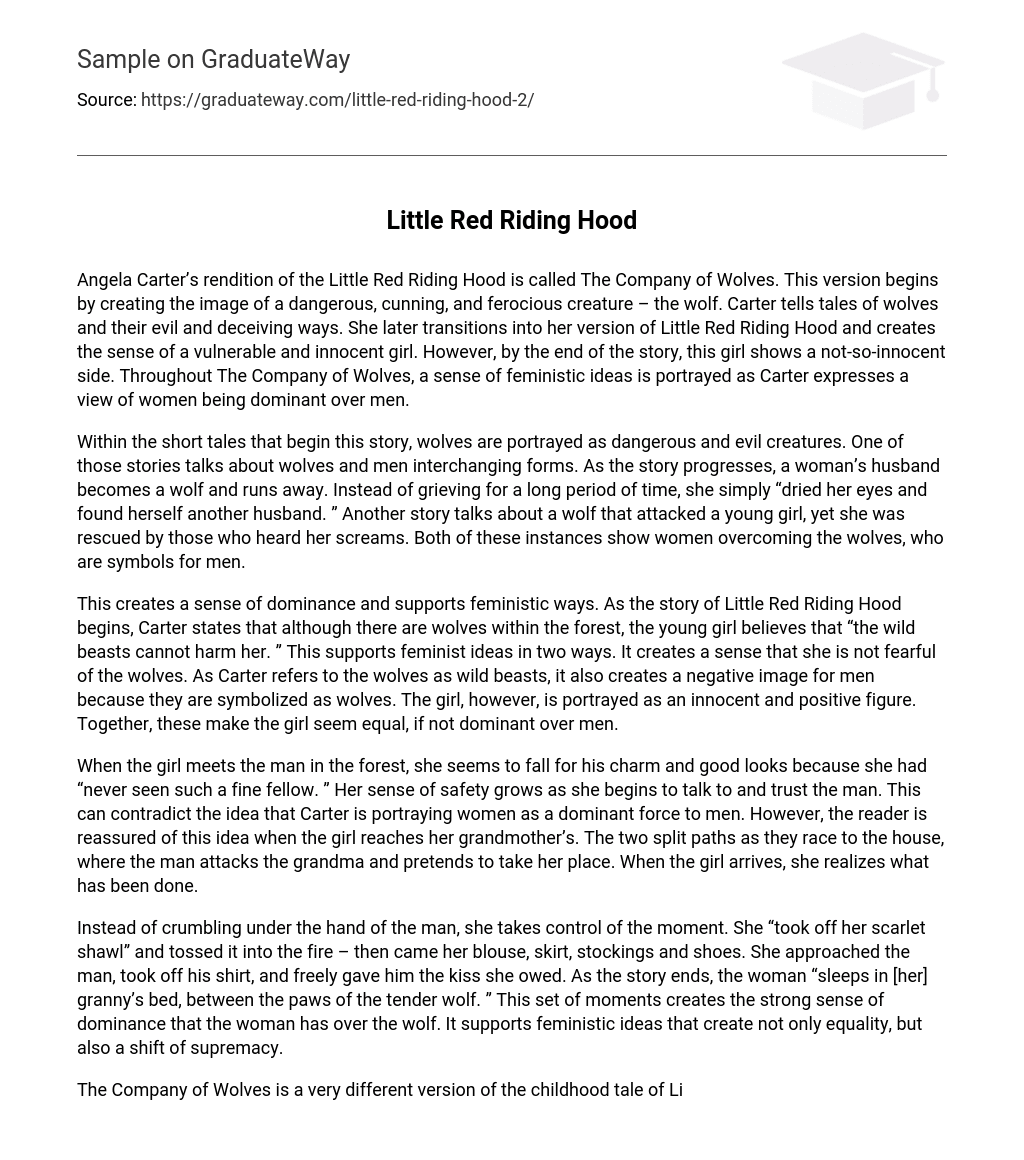Angela Carter’s rendition of the Little Red Riding Hood is called The Company of Wolves. This version begins by creating the image of a dangerous, cunning, and ferocious creature – the wolf. Carter tells tales of wolves and their evil and deceiving ways. She later transitions into her version of Little Red Riding Hood and creates the sense of a vulnerable and innocent girl. However, by the end of the story, this girl shows a not-so-innocent side. Throughout The Company of Wolves, a sense of feministic ideas is portrayed as Carter expresses a view of women being dominant over men.
Within the short tales that begin this story, wolves are portrayed as dangerous and evil creatures. One of those stories talks about wolves and men interchanging forms. As the story progresses, a woman’s husband becomes a wolf and runs away. Instead of grieving for a long period of time, she simply “dried her eyes and found herself another husband. ” Another story talks about a wolf that attacked a young girl, yet she was rescued by those who heard her screams. Both of these instances show women overcoming the wolves, who are symbols for men.
This creates a sense of dominance and supports feministic ways. As the story of Little Red Riding Hood begins, Carter states that although there are wolves within the forest, the young girl believes that “the wild beasts cannot harm her. ” This supports feminist ideas in two ways. It creates a sense that she is not fearful of the wolves. As Carter refers to the wolves as wild beasts, it also creates a negative image for men because they are symbolized as wolves. The girl, however, is portrayed as an innocent and positive figure. Together, these make the girl seem equal, if not dominant over men.
When the girl meets the man in the forest, she seems to fall for his charm and good looks because she had “never seen such a fine fellow. ” Her sense of safety grows as she begins to talk to and trust the man. This can contradict the idea that Carter is portraying women as a dominant force to men. However, the reader is reassured of this idea when the girl reaches her grandmother’s. The two split paths as they race to the house, where the man attacks the grandma and pretends to take her place. When the girl arrives, she realizes what has been done.
Instead of crumbling under the hand of the man, she takes control of the moment. She “took off her scarlet shawl” and tossed it into the fire – then came her blouse, skirt, stockings and shoes. She approached the man, took off his shirt, and freely gave him the kiss she owed. As the story ends, the woman “sleeps in [her] granny’s bed, between the paws of the tender wolf. ” This set of moments creates the strong sense of dominance that the woman has over the wolf. It supports feministic ideas that create not only equality, but also a shift of supremacy.
The Company of Wolves is a very different version of the childhood tale of Little Red Riding Hood. It talks of wolves being dangerous and evil creatures that should be feared. It uses this idea to create a symbol for men. As the story progresses, it talks about an innocent girl that becomes dominant over a man. Together, these things support feministic ideas that create equality and supremacy for women. With those ideas being focused upon throughout the story, The Company of Wolves is written in a feministic way.





